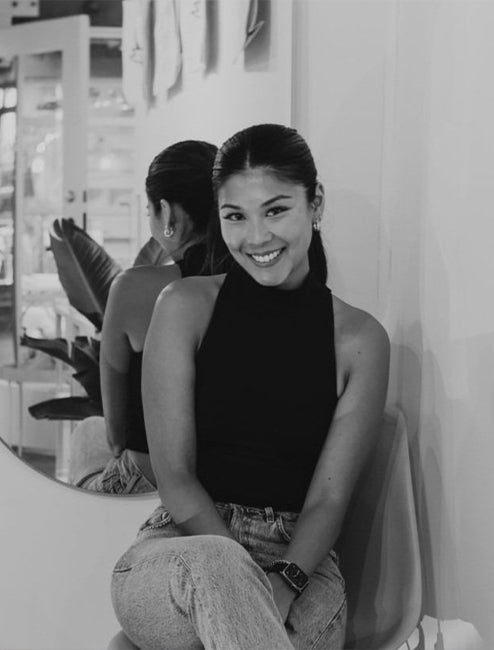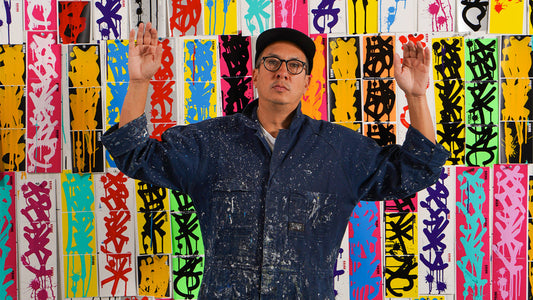The Culture: Emily Leung

Emily's career began in digital media and brand strategy, but after ten years, she desired more creative freedom and the ability to shape culture rather than simply sell products. When cannabis legalization became a reality, Emily used her skills in the uncharted territory. "I started working with cannabis brands that needed to figure out their voice, their aesthetic, and how to connect with consumers in a meaningful way," she explained. As a result, Prima Consulting was born, a consulting firm that assisted cannabis companies with branding, marketing, and creative direction.
Being well connected with the cannabis culture, Emily was able to start a more personal project with Ohai. Originally an e-commerce brand that sold beautiful pieces that truly blends Emily’s design skills and aesthetic, far removed from the traditional “stoner bro” stereotype. Today, Ohai has transformed into a media and content platform “focused on the intersection of cannabis, lifestyle, and wellness”. Through raw, authentic storytelling, Emily has created content that resonates deeply with the often-overlooked female cannabis consumer. With a clear vision, Emily is focused on building a community that truly connects with her mission.
Here, Emily shares her thoughts on the role of women in the cannabis industry.
What inspired you to enter the cannabis industry?
I was drawn to cannabis because it was an industry in the middle of transformation going from underground and stigmatized to mainstream and regulated. I’ve always been excited by the challenge of building something from the ground up, whether it was digital media in the early 2010s or cannabis after legalization.
When Canada legalized, I had already spent years in brand strategy and marketing, and I saw the massive gap between how cannabis was being marketed and how it could be. I wanted to help elevate the industry beyond the typical stoner stereotypes and create brands that felt premium, intentional, and culturally relevant.
I was part of the team that launched Qwest, which became Canada’s first premium recreational cannabis brand, dubbed "Canada’s most expensive weed" by Forbes. That experience showed me how branding and storytelling could completely shift consumer perception. Since then, I’ve continued to work with brands that want to build deeper emotional connections with their customers.
But beyond the business side, cannabis has played a personal role in my life as well. It’s been part of my self-care, my creative process, and my journey in mindfulness. That’s what led me to start Ohai—not just as a brand, but as a platform for people who see cannabis as a tool for wellness, creativity, and community.
Do you feel you had to overcome any challenges of being a woman in a male-dominated field?
Yes, and in ways I didn’t always expect. I knew cannabis was male-dominated, but I assumed that with legalization and the focus on wellness, there would be more space for women in leadership roles. Instead, I found myself in rooms where I had to prove—over and over—that I knew what I was talking about.
There’s a subtle but frustrating dynamic where women are often expected to be the “nurturing” voices in cannabis—educators, advocates, or community builders—while men focus on finance, operations, and leadership. But I’ve used that to my advantage. The ability to create strong brand narratives, build engaged communities, and connect with consumers on an emotional level is a huge part of what makes a brand successful, and that’s where I thrive.
That said, I don’t think it’s fair that women have to work harder just to claim their space in this industry. We shouldn’t have to fight to be taken seriously—we should already be in the room, leading, innovating, and building without constantly proving our worth. That’s why I admire women who just do the damn thing—who show up, build successful businesses, and create space for others along the way.
I’ve also learned that being underestimated can be powerful. It makes you sharper, more resourceful, and more intentional about the spaces you choose to be in. I’ve found strength in surrounding myself with other women in cannabis—sharing insights, amplifying each other’s work, and refusing to play small.
Do you feel that the cannabis industry is more open to women and diverse voices than other industries, or do you think there are still significant barriers within the space?
It depends on where you look. On the consumer side, women have had a huge impact. So many brands now cater to women, and cannabis has been rebranded as a tool for wellness, self-care, and creativity. But when you look at leadership, investment, and ownership, the numbers tell a different story.
The cannabis industry had the opportunity to rewrite the rules, to be more inclusive from the start. But in many ways, it still mirrors traditional industries where access to capital, leadership roles, and decision-making power often skew toward men.
That being said, cannabis is still young. It’s an industry that rewards innovation, agility, and authenticity. And I believe there’s still room for women to carve out space, whether through entrepreneurship, media, or advocacy. The key is making sure we’re not just participating, but leading.
What are some ways the industry can improve gender equality and increase the representation of women in leadership roles?
- Funding & Investment: Women in cannabis need more access to capital. Whether through grants, VC funds, or partnerships, financial support is key to seeing more women-owned businesses thrive.
- Mentorship & Sponsorship: Women in leadership roles should actively mentor and uplift other women. More structured mentorship programs can help bridge the gap.
- Policy & Representation: Women need to be involved in shaping cannabis regulations, sitting on boards, and leading industry conversations.
- Shifting the Narrative: Media representation matters. Women in cannabis should be highlighted as business leaders, not just wellness influencers or advocates.
- Workplace Culture: Companies need to actively support women in leadership by offering fair wages, flexible work environments, and equal opportunities for advancement.
How do you see the future of women in the cannabis industry?
Women have already redefined so much of what cannabis looks like—whether it’s branding, product development, or the shift toward wellness. And I think that will only continue.
The future of cannabis is personal, experiential, and community-driven, and women are at the heart of that. I see more women not just working in the industry but owning it—leading brands, media platforms, retail spaces, and policy initiatives.
I also think we’ll see more intersectionality—women working at the crossroads of cannabis, mental health, spirituality, and culture. The future isn’t just about selling cannabis; it’s about changing the way people relate to it. And that’s something women are already leading.
What’s the best piece of advice you’ve received from a fellow woman entrepreneur, and how did you apply it?
One of the best pieces of advice I ever received was: “You don’t have to do it the way it’s always been done.”
It was a reminder that in an emerging industry like cannabis, there’s no blueprint. I don’t have to follow a traditional business model, chase VC funding, or market in a way that doesn’t feel aligned. I can build my business in a way that reflects my values, my creativity, and my own definition of success.
I apply that by staying intentional with Ohai—focusing on content, community, and culture rather than just e-commerce. I remind myself that slow growth is still growth, and that sometimes the best strategy is simply staying true to your vision.
Are there any other women in the cannabis industry you admire?
Absolutely. I deeply admire Emma Andrews, CEO of Nextleaf Solutions, Jocelyn Prefontaine, International Director of Sales at Keirton Twister Technologies, and Anna Willey, CEO and founder of CAM Corp. Each of these women has carved out their own path in the industry, building success through resilience, innovation, and leadership. What I respect most about them is their ability to balance strength and competitiveness with inclusivity—ensuring that their teams, partnerships, and the broader industry benefit from their leadership. They lead with intention, fostering both business growth and a sense of community, which is something I truly admire.
Ways to connect:
IG @ohailife https://www.instagram.com/ohailife/
Email emily@ohailife.com
LinkedIn https://www.linkedin.com/in/emileu/

